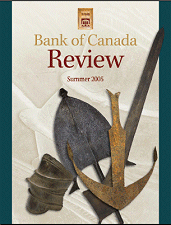Bank of Canada Review - Summer 2005
Available as:
PDF
Cover page
African Marriage Money
The metal marriage currencies pictured on the cover are part of the National Currency Collection, Bank of Canada.
Photography by Gord Carter, Ottawa.
